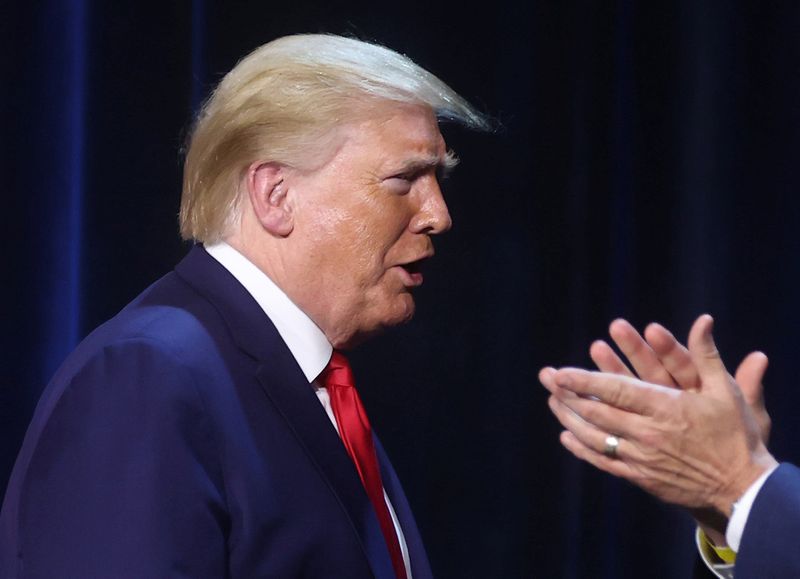
U.S. President Donald Trump is greeted as he arrives for a roundtable discussion with members of the faith community, law enforcement and small business at Gateway Church Dallas Campus in Dallas, Texas, U.S., June 11, 2020. REUTERS/Jonathan Ernst
June 11, 2020
By Steve Holland
DALLAS (Reuters) – President Donald Trump on Thursday announced modest plans for an executive order on policing, while making it clear he would not support sweeping proposals in response to protests against police brutality prompted by the killing of George Floyd.
Speaking at a campaign-style event at a church in Dallas, Trump said the order would advise police departments to adopt national standards for the use of force.
His administration would also support better training for police and pilot programs for social workers to work alongside law enforcement officers, he said.
But he derided the “defund the police” movement that advocates reducing budgets for police departments and funneling that money to programs for education, social welfare, housing and other community needs.
Trump repeatedly stated his support for police and said progress would not be made by labeling millions of Americans as racist.
“In recent days, there has been vigorous discussion about how to ensure fairness, equality and justice for all of our people,” Trump said.
“Unfortunately, there’s some trying to stoke division and to push an extreme agenda – which we won’t go for – that will produce only more poverty, more crime, more suffering. This includes radical efforts to defund, dismantle and disband the police,” he added.
Trump’s comments were his first offering policy proposals on policing and race following the May 25 death of Floyd, an African-American man, after a Minneapolis policeman knelt on his neck for nearly nine minutes. His death prompted a wave of protests in U.S. cities and abroad, re-energizing the Black Lives Matter racial justice movement.
Trump has drawn fire for calling on state governors to crack down on the protesters and threatening to send in the U.S. military.
He said on Thursday that police should be able to use force but that it should be “force with compassion.”
Police officers still need to “dominate the streets,” he added, in reference to the recent protests, some of which included violent incidents.
Trump sought to move the focus beyond policing by saying his administration wanted to foster economic development in minority communities, address healthcare disparities by race and provide more school choice.
CONGRESSIONAL ACTION
The administration’s policing proposals so far fall well short of those embraced by Democrats in Congress who are moving forward with reform legislation that could come to a vote by July 4 in the House of Representatives.
Republicans, who control the Senate, are working on a separate proposal, although its unveiling has been delayed.
White House Chief of Staff Mark Meadows met Republican lawmakers on Capitol Hill earlier this week and said Trump wanted to overhaul policing laws sooner rather than later. He did not identify any specific policy proposals but said Trump was willing to work with lawmakers on the issue.
Some Republicans in Congress have indicated support for certain measures proposed by Democrats, including a ban on the use of chokeholds and eliminating the legal defense of “qualified immunity,” which helps officers evade civil rights lawsuits.
But it is unclear whether Democrats and Republicans will be able to overcome partisan differences to pass legislation that Trump would be willing to sign.
(Reporting by Steve Holland; Additional reporting by Daphen Psaledakis; Writing by Mohammad Zargham and Lawrence Hurley; Editing by Chris Reese and Peter Cooney)

